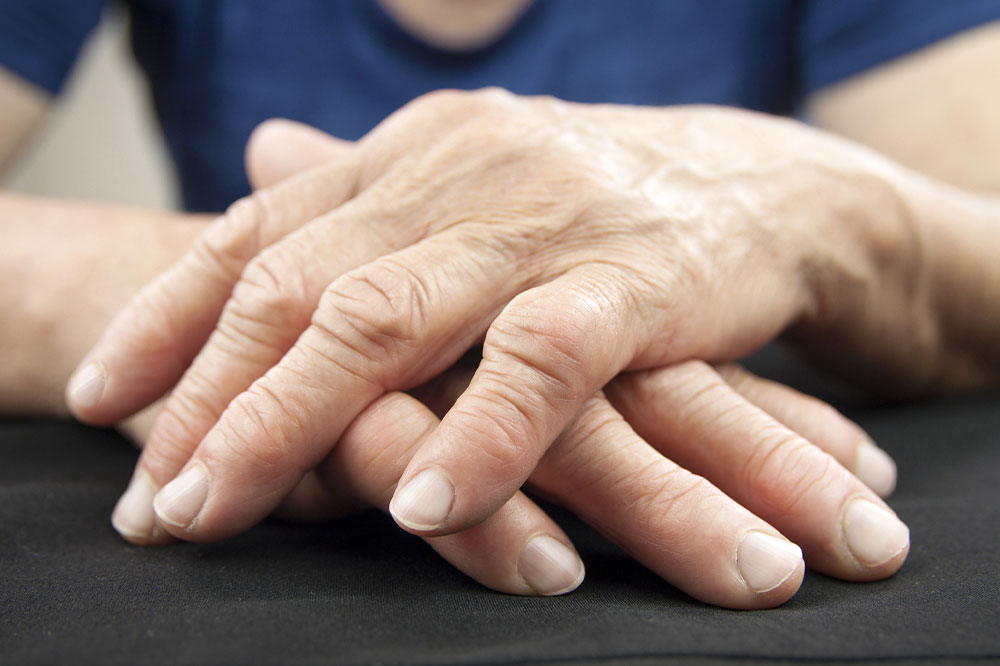
Common types of arthritis and their symptoms
Joint inflammation that only gets worse with age is characterized as arthritis. Despite the many types of this condition, common symptoms among all of them include joint swelling, stiffness, and tenderness around joints. Patients may have trouble moving around, which limits them from doing daily chores like lifting groceries, cooking, walking their dog, or driving themself to a desired place. This article highlights two of the most common types of arthritis and respective symptoms.
Joints are the regions where arthritis occurs, limiting the patient from moving around as it causes immense pain and discomfort due to the inflammation and degeneration of the joints.
Feet
The most common body part where arthritis occurs is the feet, especially the big toe. Inflammation in the big toe can make walking a painful task, and this flareup worsens at night.
Wrists
Another important joint that’s usually affected by arthritis is that of the wrist. Pain in that region can make holding or lifting heavy objects difficult for patients.
Elbows
Inflammation in the elbows may start on the outside and then turn severe with time. Turning the forearm to do any chore can be problematic.
Hips
The cushion of this weight-carrying joint can erode faster than other joints. Constant pressure of weight of the body can cause severe friction against bones.
Knees
The knees carry a majority of the body’s mass and can easily get degenerated due to arthritis, and the friction between the bones can cause severe pain and inflammation.
Types and the symptoms of arthritis
Usually people who are in their 60s are affected by arthritis, but some types of this condition can also affect younger individuals. While there are many types of this disease, it has been broken down into two common types: osteoarthritis and rheumatoid arthritis.
Osteoarthritis
Osteoarthritis normally has an effect on elderly people, and women are more prone to this type. This condition causes cartilage to wear off, which leaves intense friction against the bones. Cartilage is the only protective barrier that avoids friction while also keeping the muscles, veins, and bones in place. Common regions where this type of arthritis occurs includes the hips, knees, hands, and spine.
Symptoms of osteoarthritis
One needs to watch out for these issues that may arise:
Grating sensation
Bones rubbing against each other is a sensation one patient could easily sense. Apart from this grating sensation, one may even hear cracking and popping sounds.
Joint pain, swelling, and tenderness
The joints affected by osteoarthritis will feel tender to touch, will demonstrate swelling, both of which are a result of inflammation. Also, the joint may cause pain with any sort of movement.
Stiffness
Stiffness in the joints is another symptom that could cause discomfort for arthritis patients. This symptom usually occurs when the patient stays in one position for a long time, like waking up from sleep.
Lack of motion
Pain, stiffness, tenderness and swelling can all be responsible for lack of motion. The patient may not experience full range of motion.
Bone spurs
An osteoporosis patient may develop hard lumps that are formed around the affected joints from the extra bits of bones.
Rheumatoid arthritis
A patient’s lining of membranes around the joints, medically termed as synovium, is attacked by this autoimmune disorder. Synovium swells due to inflammation, which eventually results in damaged cartilage and inflamed bone within the affected joint. Rheumatoid arthritis is an illness that can lead to joint deformity and, consequently, permanent bone damage. And that’s primarily why rheumatoid arthritis cases have also been reported as physical disabilities.
Symptoms of rheumatoid arthritis
Some crucial signs of this condition are
Inflammation in fingers and toes
This condition starts with fingers and toes, which eventually passes onto the larger joints like the wrists, knees, ankles, elbows, hips, and shoulders.
Flares
Experiencing flares as well as relative remission are common symptoms observed in rheumatoid arthritis patients.
Tender, warm, and swollen joints
The affected joints may feel tender and sensitive to touch.
Joint stiffness and lack of movement
Patients may find moving their hands or legs difficult when they try to move after being steady for a long time or after waking up from sleep.
Ligaments and tendons weaken
Rheumatoid arthritis affects the ligaments and tendons that are responsible to keep the joint together. The joints may weaken and lose their shape, and alignment.
Fatigue, fever, and loss of appetite
Fatigue can hinder a person’s routine as it makes them unproductive, slows responses, and aggravates to muscle pain. Patients are also suceptible to rapid mass reduction owing to a loss of appetite.
Other common types of arthritis are psoriatic arthritis, gout, and lupus. The symptoms of these types are more or less similar to the ones listed above.




